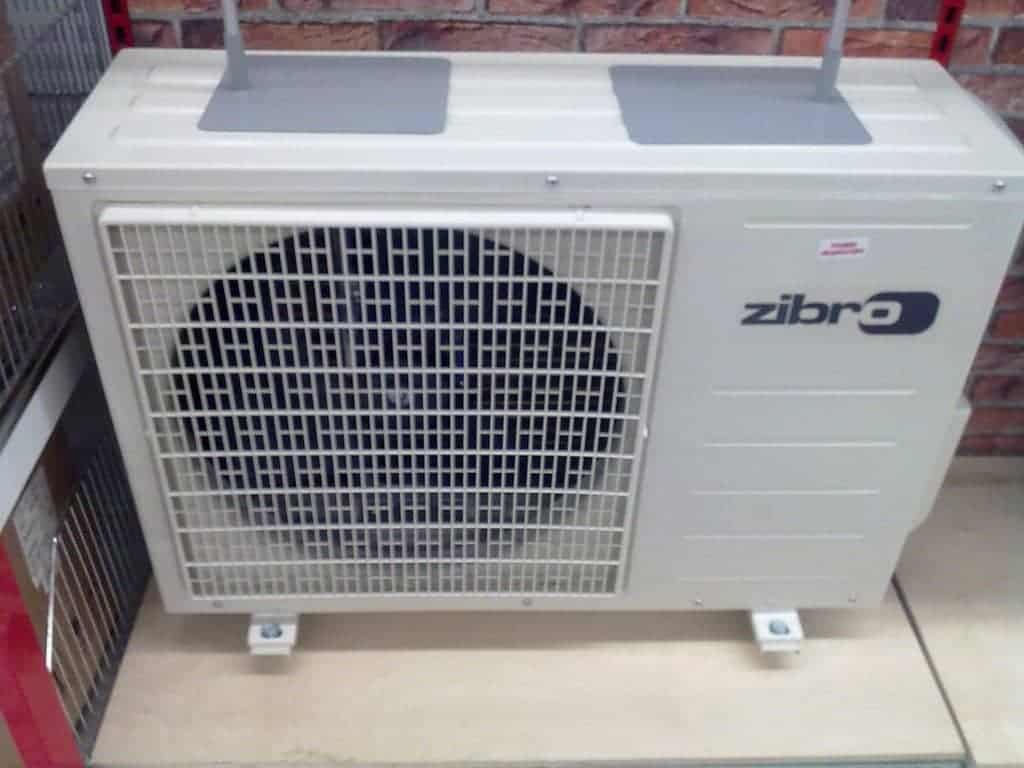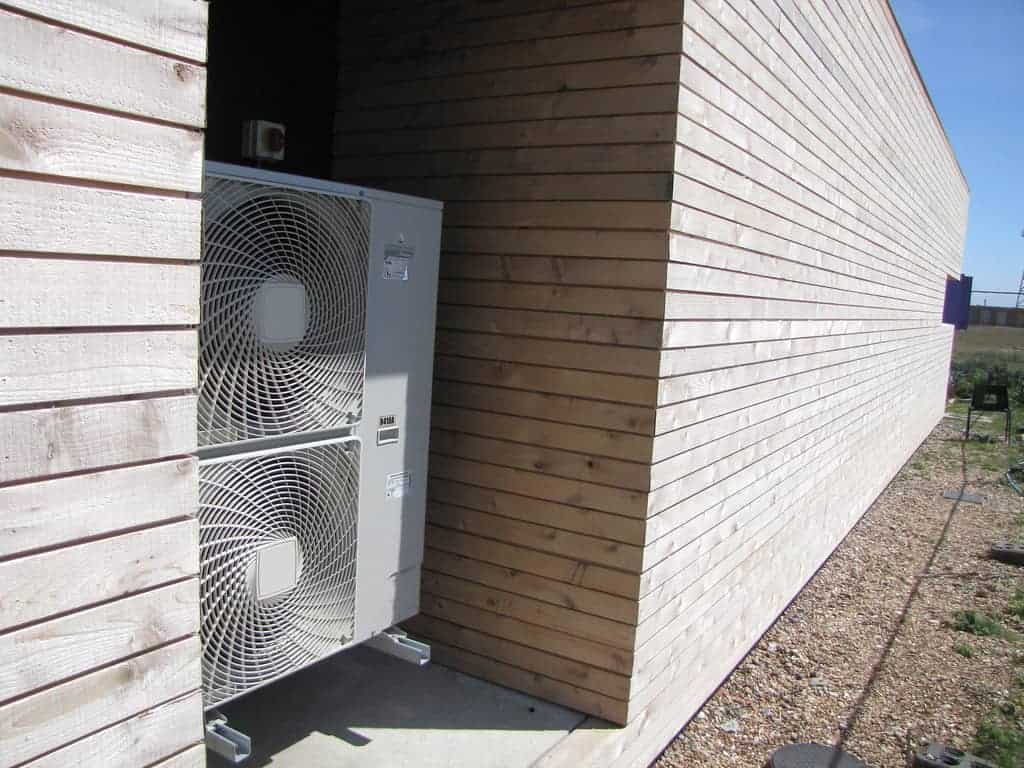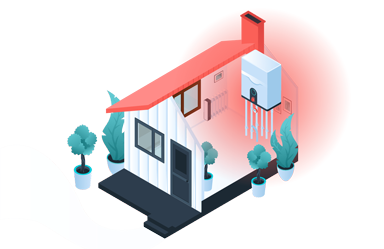Air Source Heat Pumps – the ultimate guide
If you are thinking of upgrading your home with an Air Source Heat Pump, you need to read this article. We will profile this eco-friendly new technology in detail telling you precisely what it is, how it works, and crucially, how much it costs.

With the climate crisis dominating headlines around the world, everyone is trying to do their bit to be green. We are all recycling more, driving electric or hybrid cars, and offsetting our carbon emissions when we fly.
One of the main ways most people are contributing to the climate crisis is through their home. Gas boilers are an affordable way to heat your home but no-one would claim they were particularly environmentally friendly.
If you buy a new-build house these days, the chances are it will have a much eco-friendlier way of staying warm installed. And many home-owners are also looking out for ways to renovate and make their existing home more carbon-neutral as well.
If you have ever looked into alternatives for your gas boiler, one of the options you may have come across is an Air Source Heat Pump. But ask a hundred people in the street and you find many who know what an Air Heat Pump is or how it works.
That’s what this guide is all about. If you want to know what an Air Source Heat Pump is, how it works, and perhaps most importantly, how much it will cost, just keep on reading.
What is an Air Source Heat Pump?
An Air Source Heat Pump is a system that transfers heat from outside to inside a building or vice versa.
It uses a refrigerant system involving a compressor and a condenser to absorb heat at one place and release it at another. In domestic settings, an Air Source Heat Pump absorbs heat from the outside air and releases it inside either as hot air, hot water-filled radiators, underfloor heating or to supply hot water.
Air source heat pumps are capable of doing all the work that a traditional gas boiler can. They will keep your home warm in winter, cool in summer, and supply hot water as warm as 80 °C. They also have the added bonus of not using any fossil fuels and so not contributing any carbon to the atmosphere.
How does an Air Source Heat Pump work?
An Air Source Heat Pump is fitted to the outside of a property, most commonly at the side or the back. It resembles an air conditioning unit but will usually be situated at ground-floor level to facilitate easy access.
The process by which an Air Source Heat Pump works is similar to that of a refrigerator in reverse. It can be explained in five simple stages:
- The Air Source Heat Pump takes in air from outside a property to heat a liquid refrigerant.
- It then uses electricity to power a pump which compresses this liquid to increase its temperature.
- This then condenses back into a liquid to release the stored heat.
- This heat is then pushed around your home either through radiators or via an underfloor heating system. Any left-over is stored in a hot water cylinder.
- This stored hot water can then be used for washing, showering, or bathing.
While an Air Source Heat Pump does require electricity to operate, it uses a minimal amount. It will always use less electrical energy than the heat it produces.
How much electricity does an Air Source Heat Pump use?
Every Air Source Heat Pump requires electricity to operate but they will all generate more heat than the electrical energy they are using making them more efficient than traditional electric heating systems. Exactly how much more efficient they are will depend on the manufacturer and model you choose to buy.
The efficiency, or the measure of the heat energy output per kW of electricity, of an air source heat pump is usually stated as an SCOP. This stands for Seasonal Coefficient of Performance.
This will usually be represented as a simple number which tells you how many kilowatts of heats is generated for every 1kW of electricity used.
For example, if an air source heat pump claims an SCOP of 3.4, this means that for every 1kW of electricity it consumes, it will generate 3.4kW of heat.
RELATED READING: What is an air source heating system?
Different types of Air Source Heat Pumps

There are two main different types of Air Source Heat Pump you can buy. The main difference between the two is what they can and cannot provide:
- Air-to-water heat pump – These take heat from the outside air and use if to power a traditional wet central heating system. The heat generated is used to warm hot water which is then pushed around your house in radiators or underfloor heating. An air-to-water heat pump can also generate hot water.
- Air-to-air heat pump – These take heat from the outside air but instead work more like an air conditioning unit and use this heat to warm you home directly using fans. Unlike an air-to-water heat pump, these systems cannot generate hot water.
What is the difference between an Air Source Heat Pump and a Ground Source Heat Pump?
There are a number of key differences between an air source heat pump and a ground source heat pump. The main ones are:
- Where they source their heat – while there are similarities in the way that air source heat pumps and ground source heat pumps work, they source their heat from very different places. An air source heat pump will take heat from the air while a ground source heat pump will source it from the inherent heat that can be found underground.
- Installation – Ground source heat pumps require extensive groundworks during installation. This either involves digging up a large area of land or digging a deep borehole to bury the systems pipes. No such work is required when installing an air source heat pump so installation costs tend to be much lower.
- Efficiency – Ground source heat pumps tend to be slightly more efficient than air source heat pumps. Using the SCOP measurement we explained above, a typical air source heat pump will have an SCOP figure of around 3.4 while a ground source heat pump will have something close to 4.2.
- Incentives – The government’s Renewable Heat Incentive offers more for ground source heat pumps than air source heat pumps meaning a more generous return on your investment. At current rates, you will get 20.89p for ground source heat pumps but only 10.71p for air source heat pumps. These figures will fluctuate though.
How much does an Air Source Heat Pump cost?
The crucial consideration for most people considering buying an air source heat pump is how much a system will cost.
A good air source heat pump will set you back a little over £7,000. When you throw in all the installation costs as well, your total outlay is likely to be more like £11,000.
How does this compare to the price of other heating systems:
- Biomass boiler – £15-20,000
- Ground source heat pump – £14-20,000
- Regular combi gas boiler – £1,500 – 3,500
While the initial costs of an air source heat pump are obviously quite a bit higher than a conventional gas boiler, they do compare favourably with other green heating systems. But you should also consider the running costs when you have installed the system too.
A typical new gas combi boiler is likely to cost you in the region of £900-1,000 a year to run. In comparison, a typical air source heat pump with an SCOP of 3.4 is likely to cost you just £700 a year to run.
If you are currently using an older gas boiler or another type of inefficient heating system, you could see savings on your annual energy bills that amount to quite a lot more.
In addition to these savings, you will also make money under the government’s Renewable Heating Incentive programme.
How much will an air source heat pump earn under the Renewable Heating Incentive?
The Renewable Heating Incentive is a government programme designed to encourage people to adopt renewable energy sources for their homes. It pays people a set rate for any heat they generate in their own home using renewable technologies.
One of the beneficiaries of the Renewable Heat Incentive are air source heat pumps. But it will have to an air-to-water system and not an air-to-air system to qualify.
The current Renewable Heating Incentive tariff for air source heat pumps is 10.71p per kW. This can amount to a considerable return over the lifetime of your air source heat pump. But do bear in mind that the government can, and sometimes does, adjust this tariff amount.
The pros and cons of an air source heat pump
There are a number of obvious advantages to opting for an air source heat pump but also some significant disadvantages, too.
Advantages:
- Environmentally-friendly – Air source heat pumps are more environmentally friendly than traditional gas boilers meaning you will be contributing much less CO2 to the atmosphere.
- Simple Installation – Compared to other green heating solutions, air source heat pumps are much easier to install and therefore have lower installation costs too.
- Eligible for the Renewable Heating Incentive – meaning you can be sure of making a good return on your investment.
- Lower running costs – An air source heat pump costs less to run than a traditional gas boiler meaning your energy bills will be lower.
Disadvantages:
- Noise – Air source heat pump condensers can be noisy and will also blow out cold air. This can be annoying if you are close to the outside unit.
- Electricity – An air source heat pump does use electricity so it is not completely zero-carbon unless you generate your electricity from a renewable source such as solar panels or a wind turbine.
- Levels of heat – Air source heat pumps do not always generate very high temperatures. You may find you need larger radiators to warm your house sufficiently while some systems state that they work best with an underfloor heating system.
- Upfront costs – The biggest drawback for most people when buying an air source pump is the upfront costs. While they do compare favourably to other renewable heating solutions, they still cost a lot more upfront than a conventional gas boiler.
Is there an affordable alternative to an air source heat pump?
The main deterrent to investing in an air source heat pump tends to be the high upfront costs of buying and installing one. While the system should pay for itself and will work out cheaper than a traditional gas boiler over its lifetime, if you cannot afford the upfront cost then it is not a technology you can get at the moment.
Unfortunately, air source heat pumps are about the most cost-effective eco-friendly domestic heating solution on the market at the moment too. So if the upfront cost really is a big sticking point for you, the only other option is a modern and energy-efficient gas boiler.
Even these can be quite expensive for some people but you can be certain that a new gas boiler will be more energy-efficient and therefore eco-friendlier than an old one. And there is a way that you can save even more on a brand new gas boiler too.
How to get the cheapest gas boiler and the lowest installation costs
If you do decide that a new gas boiler is the right choice for you and you want to get the best possible deal, we recommend you take a look at HEATABLE.
HEATABLE is an online installation company that operates across the UK. It is able to get great deals on lots of top boilers and its low overheads mean HEATABLE is able to pass big savings on to customers.
If you want to know how much a new gas boiler will cost through HEATABLE, all you have to do is fill in their online form. It only takes a couple of minutes and you don’t have to submit any personal information.
Just give them a few details about your property and they will generate a fixed-price quote for a wide range of boilers that will suit your home. HEATABLE works with a number of top-quality manufacturers including Worcester Bosch, Viessmann, Ideal, and Baxi.
You can save a bundle on installation costs too and there is a great range of finance deals available too. Prices start from around £16 a month and while the standard APR is 9.9%, there are regular 0% APR deals available too.
Don’t just take our word for it
If you want to know how HEATABLE customers feel about their service, you don’t have to look far. There are hundreds of positive reviews about HEATABLE online.
The HEATABLE website has more than 500 5* ratings for you to view and TrustPilot has given HEATABLE ascore of 4.7/5 score with 95% of customers rate their service as either good or excellent.
HEATABLE has changed the way people buy a gas boiler and brought the prices down too. If a gas boiler is the right choice for you, HEATABLE is the right choice too.
Summary
An Air Source Heat Pump is a modern, eco-friendly, and simple way of heating your home. In this guide, we have explained how an air source heat pump works, how it compares to other systems, and importantly how much it costs.
There are advantages and disadvantages to choosing an air source heat pump and we have outlined those here. The main disadvantage is the upfront cost meaning a lot of people still opt for a modern gas boiler which can cut your emissions and make you more energy efficient at a much lower starting price.
Have you got an air source heat pump? How do you find them? Are there any issues or positive that we have missed out in this article? We always welcome the input of our readers so do share your thoughts and experiences today using the comment box below.
